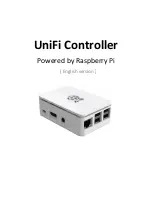
SITE PREPARATION
DuPont™ VELPAR® DF is recommended for weed and
brush control in areas where the following species are
grown:
EASTERN US AND LAKE STATES
WESTERN US
APPLICATION TIMING
EASTERN US
Apply VELPAR® DF from early spring to early summer
after hardwoods have broken bud and before the foliage has
hardened off.
VELPAR® DF (Lb/Acre)
Soils
Eastern US
Coarse Texture
Sand, loamy sand,
sandy loam
2 2/3 - 4
Medium Texture
Loam, silt loam,
sandy clay loam
4 - 5 1/3
Fine Texture
Silty clay loam,
clay loam, sandy clay,
silt, silty clay, clay
5 1/3 - 6 2/3
The rates listed are for broadcast application. Use the lower rates on
coarse textured soils and soils low in organic matter. Use the higher
rates where weeds identified in this label as “partial control or
suppression” predominate.
WESTERN US
For SITE PREPARATION, VELPAR® DF may be
applied at 1.3 to 4 pounds per acre. Use the lower rates on
coarse textured soils and soils low in organic matter. Use the
higher rates on fine textured soils and soils high in organic
matter. Use the higher rates where weeds identified in this
label as “partial control or suppression” predominate.
In areas where other conifer species may be mixed in with the
conifers listed above, VELPAR® DF may be applied if the user
has prior experience with VELPAR® DF on the other conifer
species. With no prior experience, it is recommended that either
a small area of plantings be tested for conifer safety prior to
treating larger areas, or make no application of VELPAR® DF
in these areas within the site preparation area. Conifer species
that are sensitive to VELPAR® (hexazinone) DF, such as, sugar
pine and western larch, require 18 months before interplanting
on treated sites.
Applications made to shelter wood sites may also result in
mortality to over-story conifers. Factors that may influence
conifer sensitivity in these sites could include application rate,
conifer species, soil characteristics, uniformity of spray distri-
bution across the treatment swath and environmental stress.
Rain Belt (areas of high spring rainfall): For best results,
apply in late winter or spring when weeds and brush are
actively growing.
Snow Belt (areas of low spring rainfall): For best results,
apply in the fall before soil freezes, or in the spring after
snow cover melts in anticipation of rainfall. Weed and brush
control results from spring applications will be dependent
on sufficient rainfall following application to activate
VELPAR® DF.
PLANTS CONTROLLED
VELPAR® DF is recommended for the control or
suppression of the following species:
Herbaceous Plants
Woody Plants
*
Partial Control or Suppression - Specie suppression or partial
control is a visible reduction in plant competition (reduced
population and/or vigor) as compared to an untreated area. Degree
of suppression will vary with rate applied, size of plants at
application and environmental conditions following treatment.
Species indicated above, especially resprouts of these species, may
require a follow up treatment for acceptable control. Burning, as a
follow up treatment, will enhance control of resprouts.
Within several weeks after VELPAR® DF activation by
rainfall, affected vegetation may be burned, if desired. This
burn may further enhance control of vegetation. Burn the
vegetation only after any residual stand is completely
defoliated, at least twice, allowing for sufficient root uptake of
VELPAR® DF. In the West, results may take one to two years
in areas of low rainfall.
Ash
Aspen (big tooth,
trembling)
Balsam poplar
Birch
Blackgum
Deerbrush ceanothus
Elm
Flowering dogwood*
Greenleaf manzanita
Hawthorne
Hazel
Hickory
Honeysuckle*
Oaks
Red maple*
Snowbush ceanothus
(varnishleaf ceanothus)
Sourwood*
Sweetgum
Whitehorn
Wild cherry
Willows
Annual bluegrass
Asters
Barnyardgrass
Bentgrass
Bromegrass
Canada thistle*
Catsear (false dandelion)*
Common groundsel
Common ragweed
Crabgrass*
Curly dock*
Dandelion*
Elksedge
Fescue*
Fireweed (willowweed)*
Fleabane
Foxtail
Goldenrod*
Heath aster*
Horseweed*
Orchardgrass*
Oxeye daisy
Pennsylvania smartweed*
Pinegrass
Quackgrass*
Ryegrass*
Squawcarpet
Velvetgrass
Wild carrot
Blue spruce
Douglas fir
Engleman spruce
Grand fir
Jeffrey pine
Lodgepole pine
Noble fir
Ponderosa pine
Sitka spruce
White fir
Austrian pine
Balsam fir
Black spruce
Loblolly pine
Longleaf pine
Ponderosa pine
Red pine
Red spruce
Scotch pine
Shortleaf pine
Slash pine
Spruce
Virginia pine
White spruce
FORESTRY
9







































